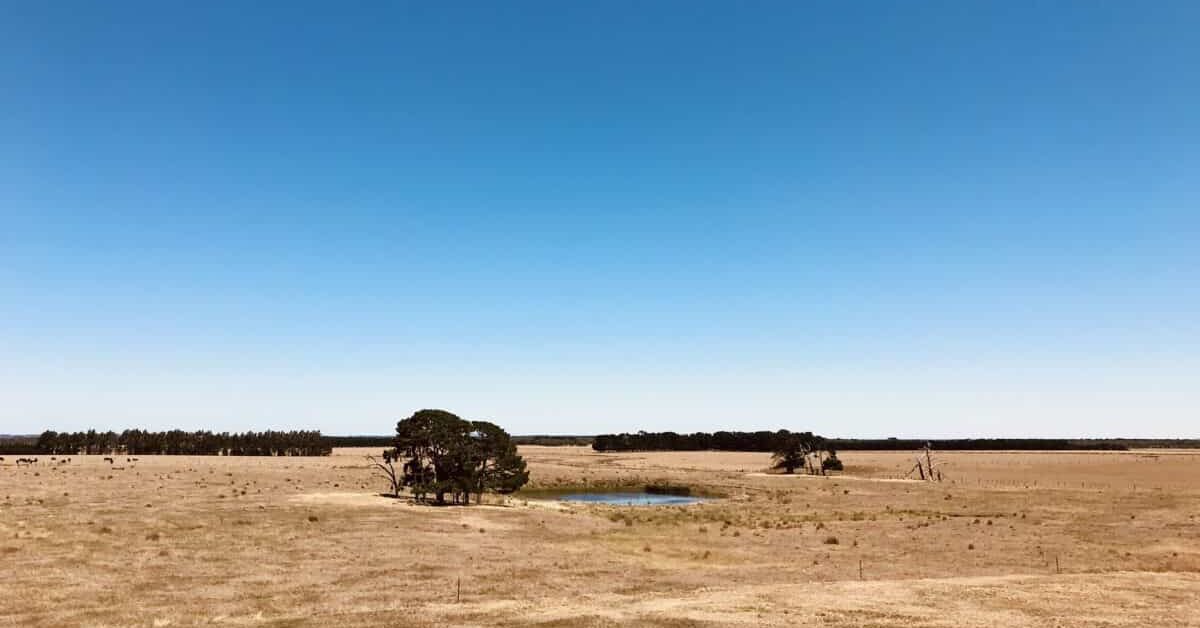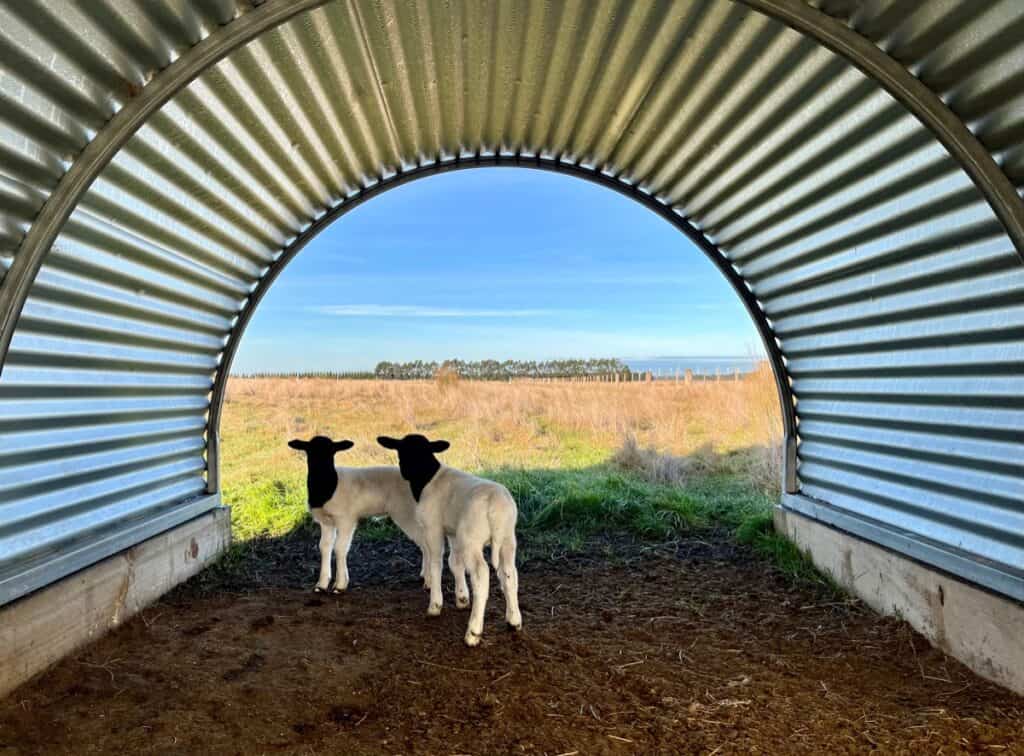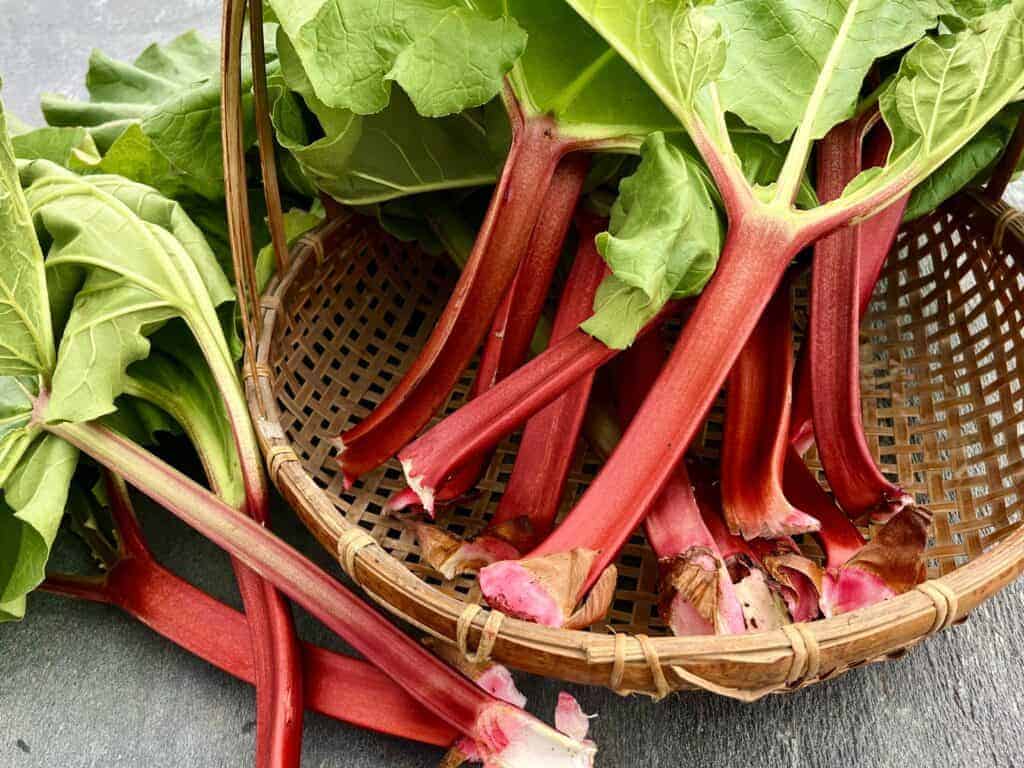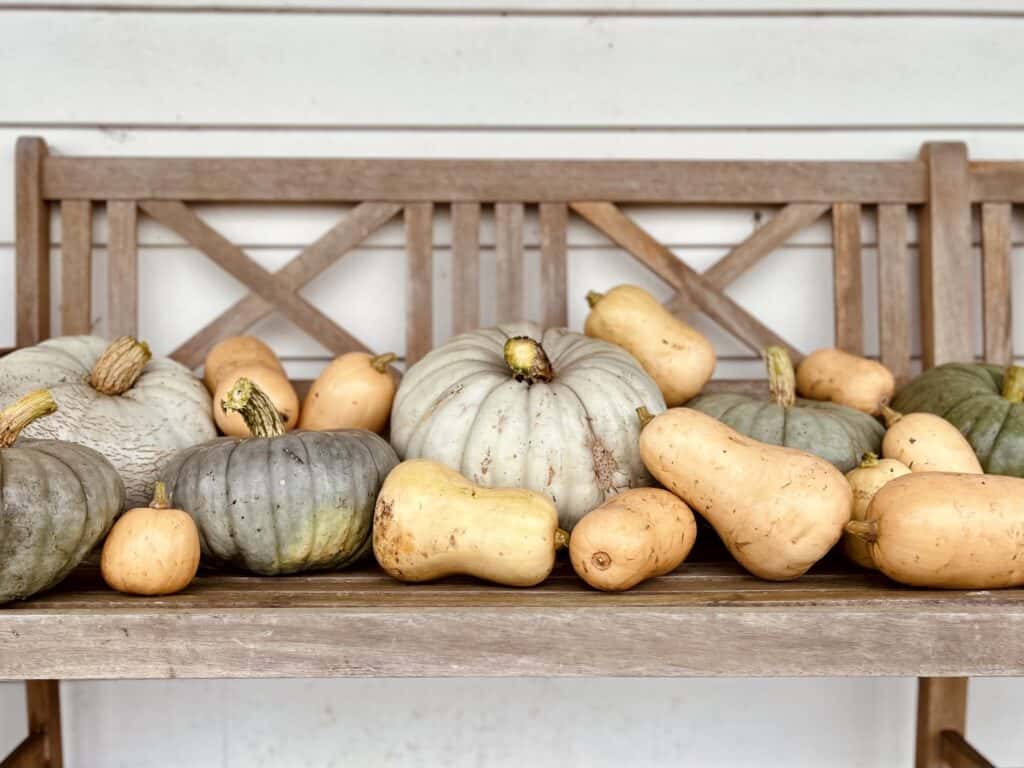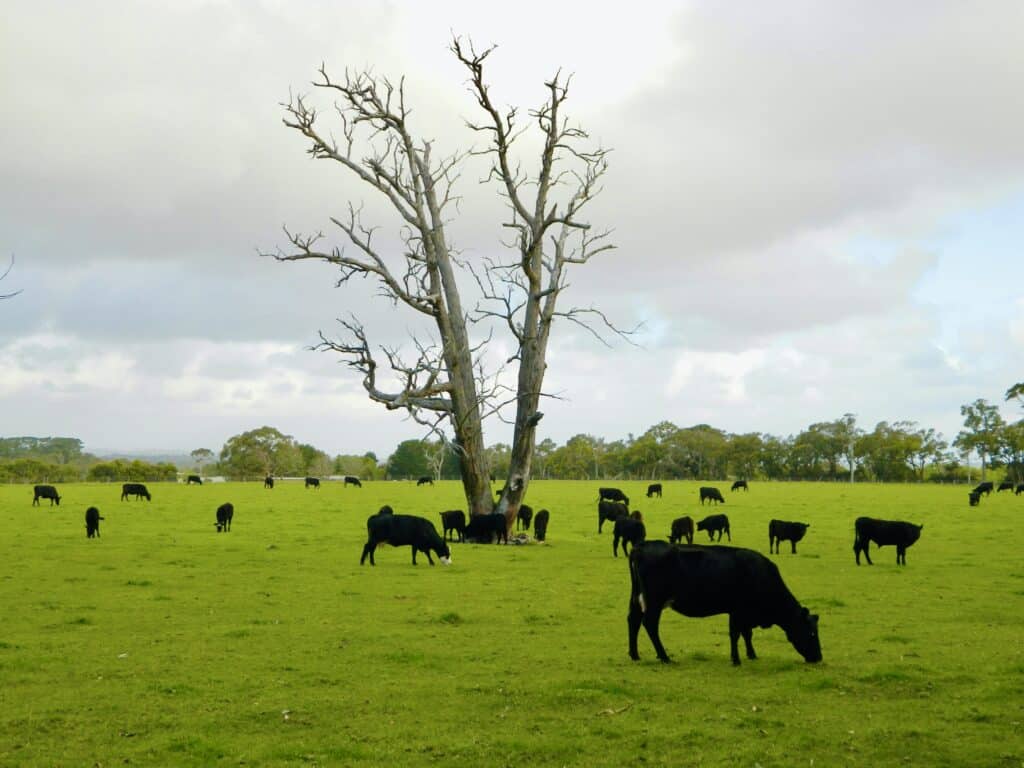Homesteading comes with many challenges; the most difficult of these to manage usually come from unexpected weather. Here I highlight some of the homesteading challenges you may be faced with and how to get ahead of them before they can wreak havoc on your farm.
We had been casually looking for rural properties for awhile but the actual purchase of Silverholme was on a bit of a wim. After a weekend away we were driving home the ‘long’ way and passed a for sale sign. The property was hidden behind a pretty dense line of pine trees so we pulled into the primitive drive and jumped the gate to get a better look.
With the exception of an old set of cattle yards and a few rundown fence lines the land was empty. It felt like the right piece of land and within a week our offer had been accepted.
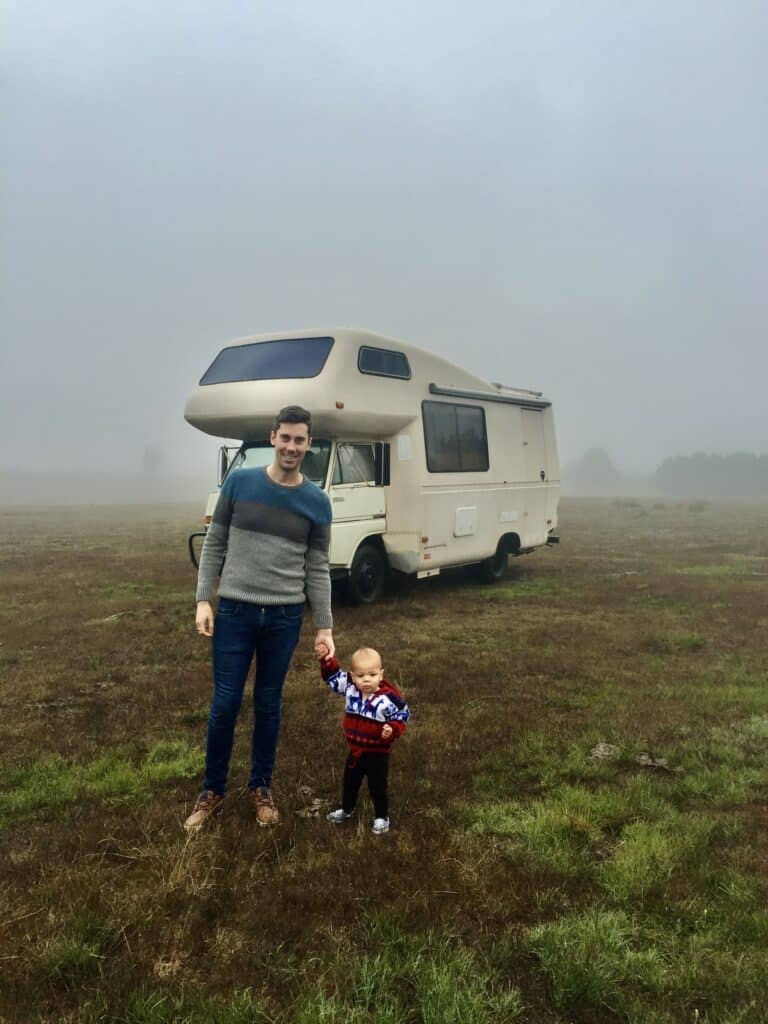
The following few years, before we broke ground on the homestead, we visited regularly, either on day trips or for the weekend when we would pull up and live out of our motorhome.
The occurrence of us staying for the weekend become so frequent we decided to leave the van parked on the property permanently.
Our weekend visits gave us an opportunity to study the weather throughout the year.
This particular area of the Victorian Central Highlands has very cold (for Australian standards) winters and hot summers with above average rainfall for Victoria.
Through the first few years the pastures stayed green, apart from the heights of summer where it would slowly begin to dry and yellow. Even then the next rains were never far away and would be enough to turn the grass green. The weather seemed fairly consistent year to year.
We had decided to purchase bare rooted trees in bulk from a wholesaler that would arrive late August for planting. This would give the trees sufficient time to start establishing themselves during our typically wet spring. When the trees arrived it was a manic three days with a lot of help to get them in the ground. It was windy and bitterly cold; rain was falling as sleet as we dug holes and planted. By the end of the weekend we had successfully planted all 100 trees.
What we weren’t prepared for once the trees were in the ground was the unseasonably dry spring ahead of us.
Homesteading Challenges in the Dry
When I say dry I mean arid desert like dry. The grass browned and the earth below cracked and started to turn to dust. We didn’t have a skerrick of rain for 5 months.
This was our first reminder that cycles or seasonal patterns are not a given and measures need to be taken to offset the affects of unseasonable weather.
Living in an off-grid house means sun, rain and wind are our most important resources. This is the case in many rural settings. During extended dry periods our stored water must be treated as a finite resource and our consumption needs careful management to avoid the high costs of buying and carting additional water in. This isn’t easy if, like us, you are not only consuming water through the household but it is also used to fill the livestock water troughs and for the garden.
Silverholme has two dams connected via a seasonal creek. The smaller dam (or top dam as we refer to it) runs dry very quickly without rainfall, while the larger dam generally always keeps water. In fact our neighbour once said its the only dam in the area she can’t recall ever seeing run dry. With this, the paddock that holds the large dam is where we keep the majority of our livestock during dry periods; especially the cattle who have the greatest water intake of any livestock. They can drink directly from the dam, removing their dependance on our stored water.
Crop watering becomes challenging during dry periods; while the crops water requirement is increasing, the water availability is decreasing. I combat this by watering early morning before the heat of the day or evening after the sun has fallen in the sky. There are pro’s and con’s to both methods; water in the evening means there is next to no water evaporation, the soil remains damp longer and the crops have access to water over a longer period. However, you are inclined to invite slugs and other bugs into the moist and humid garden; feasting on your crops.
By watering early morning before the sun hits the garden you will still get some benefit from lower evaporation and longer water retention in the soil but it is for a much shorter period than of an evening. Morning watering can prevent the flurry of insect activity you would see in the prolonged humid environment you create by watering of an evening, plus you can see the bugs and slugs if they do come out to play.
Dry periods means slow or no growth of your pastures, therefore a shrinking food source for your livestock. You may need to revise the number of head you are carrying or bring in additional food in the form of hay or grain which can be a costly exercise.
With less pasture, livestock are often eating directly from soil level. This increases the risk of ingesting and harbouring harmful parasites. Drenches can be used to control parasites, however, they must be used sparingly. The alarming rate of drench resistants in parasites from the overuse of drenches is becoming dire in some areas. Rotate drenches based on their active ingredient and if you’re not sure if your stock need drenching have a faecal worm count conducted first.
A good paddock rotation system is your best bet in reducing the potential of high parasite (worm) burden in your livestock, avoiding overuse of drenches, potential drench resistance and costly outlay for the drench itself.
My post on Rotational Grazing includes information on the benefits of paddock rotation, how to get started and continued management of your paddocks for healthier livestock.
It’s also worth monitoring your fence post during dry spells. Soils shrinks as it dries and posts can often become loose in the ground, some livestock are notorious for testing and taking advantage of weaknesses in a fence. We once found our bull on the next property after he found a single star post had rusted and snapped at the base giving him the opportunity to push through the fence.
Homesteading Challenges in the Wet
Our first dry period, which persisted for the most part of a year, came to an abrupt end. The skies opened and the rain fell…and fell…and fell.
There was so much water over such an extended period that the ground become waterlogged, at times paddocks where blanketed in a few inches of stagnant water and our small seasonal creek that is generally 60cm wide swelled to 10 metres wide in parts.
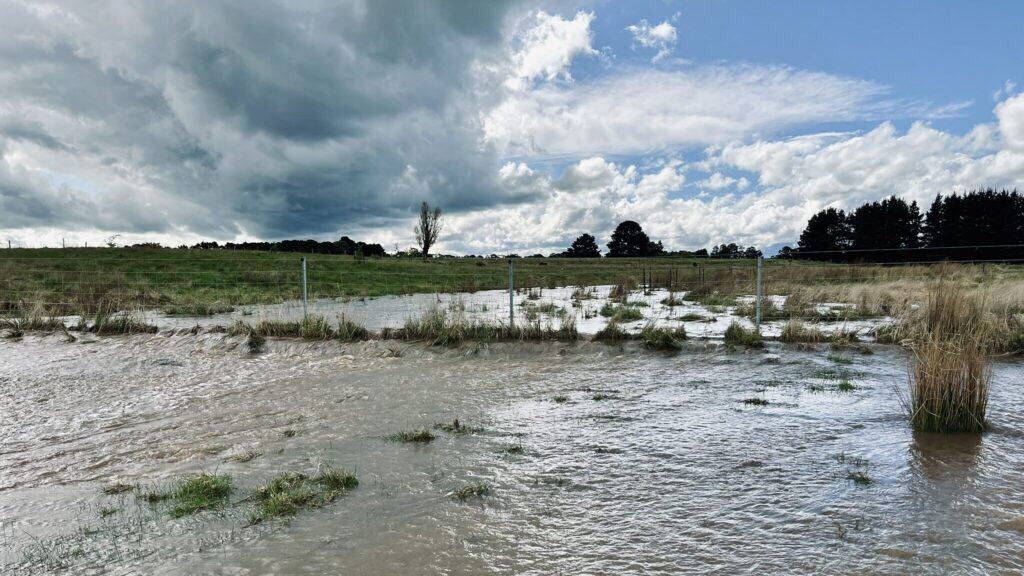
Silverholme seasonal creek in flood during a particularly wet year
The challenges faced in prolonged wet periods can be more difficult to overcome than simply carting in additional resources. The biggest obstacle we face at Silverholme is water drainage.
Most of the Silverholme property has a gentle slop towards the creek, however, the yard behind the homestead and two paddocks which we refer to as the turbine paddock, given the location of our wind generators, and the top paddock are almost entirely flat. Excessive rain results in the soil waterlogging and therefore any further water has nowhere to go and becomes stagnant.
Livestock, in particular sheep and goats, ran on muddy soil or through stagnant water see an increased parasite and disease risk. Water can wash new bacteria from neighbouring properties that your stock have had no previous exposure to and therefore no immunity.
Species of fluke thrive in marshy areas as does the bacteria that causes highly contagious and difficult to manage foot rot. Good drainage, paddock rotation and biosecurity are the best methods to reduce or eliminate these risks. Fluke can be managed via the use of specific drenches while foot rot can come with a far more time consuming treatment.
Outdoor birthing also comes with greater risks during wet periods, especially for your smaller livestock. Lamb and kids lose body temperature rapidly once wet, this is made worst if combines with windy conditions. If possible use high land with good drainage and protection from wind for birthing or utilise a barn if available, although indoor lambing / kidding does come with its own challenges.
Wet periods may require you to devise plans to manage your farm when parts of your property become inaccessible, either from mud that you can’t traverse without getting bogged or rising waterway. If your property does host a waterway consider what action you may need to take if livestock are trapped by rising water with less food than is required or inadequate shelter for the weather conditions.
In regards to crops and your garden, root rot can be particularly troublesome in waterlogged soil. A bacteria that feeds on plant roots and ironically inhibits them absorbing water; in most cases resulting in death. I like to build up my garden beds where possible with free draining soil and compost. My kitchen garden is all raised garden beds for increase drainage.
It’s not all doom and gloom
Homesteading is a masterclass in utilising the weather to your advantage in becoming self-sufficient with the meat we raise, the food we cultivate and the power we generate. Seasonal extremes are often followed by long periods of consistent weather and bumper crops.
When it feels like Mother Nature is working against our every move; knowing your property and its cyclical weather patterns plus early intervention during the long drys and extended wets will keep you on track for homesteading success.
Share
